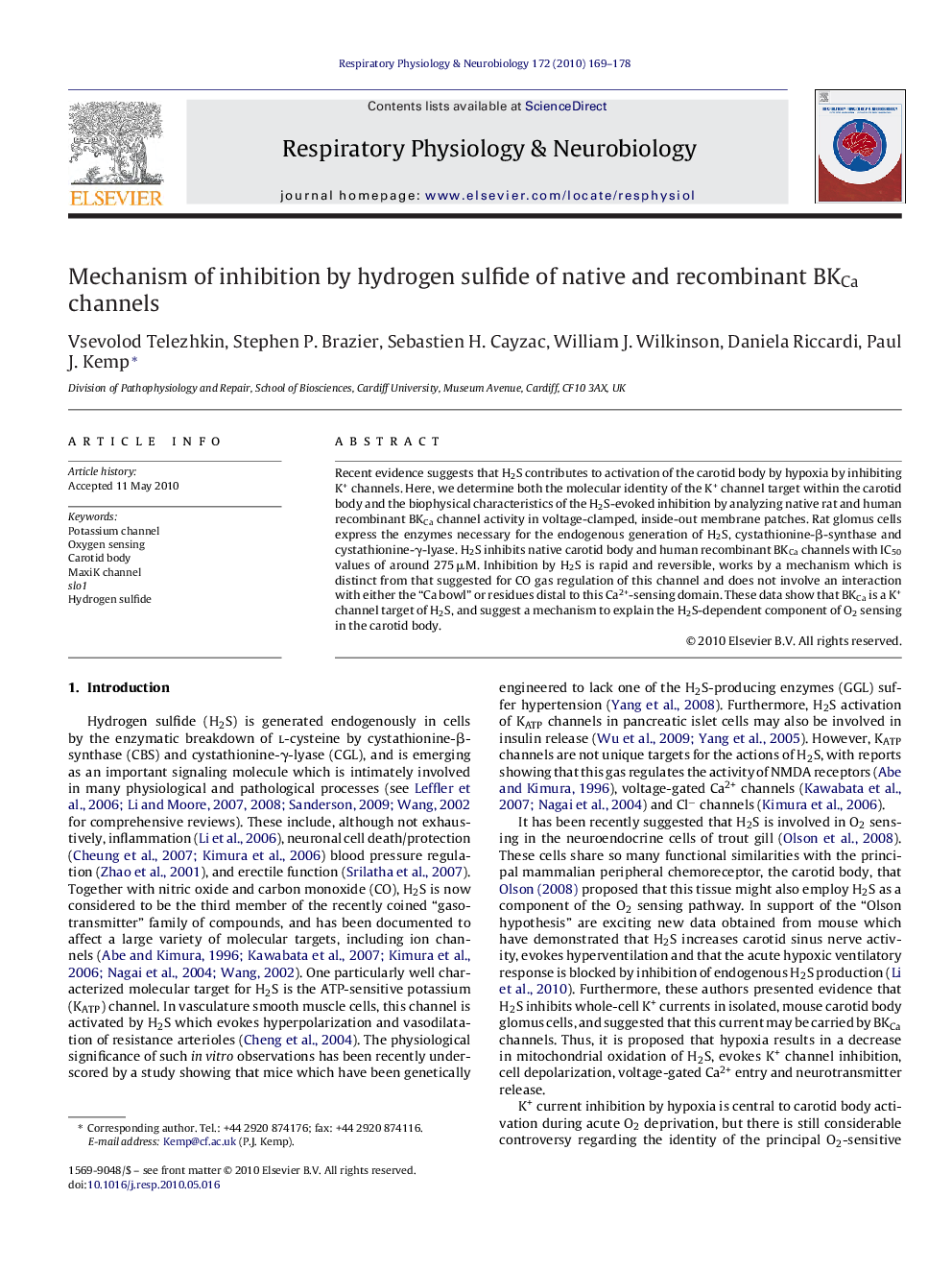| Article ID | Journal | Published Year | Pages | File Type |
|---|---|---|---|---|
| 2847632 | Respiratory Physiology & Neurobiology | 2010 | 10 Pages |
Recent evidence suggests that H2S contributes to activation of the carotid body by hypoxia by inhibiting K+ channels. Here, we determine both the molecular identity of the K+ channel target within the carotid body and the biophysical characteristics of the H2S-evoked inhibition by analyzing native rat and human recombinant BKCa channel activity in voltage-clamped, inside-out membrane patches. Rat glomus cells express the enzymes necessary for the endogenous generation of H2S, cystathionine-β-synthase and cystathionine-γ-lyase. H2S inhibits native carotid body and human recombinant BKCa channels with IC50 values of around 275 μM. Inhibition by H2S is rapid and reversible, works by a mechanism which is distinct from that suggested for CO gas regulation of this channel and does not involve an interaction with either the “Ca bowl” or residues distal to this Ca2+-sensing domain. These data show that BKCa is a K+ channel target of H2S, and suggest a mechanism to explain the H2S-dependent component of O2 sensing in the carotid body.
